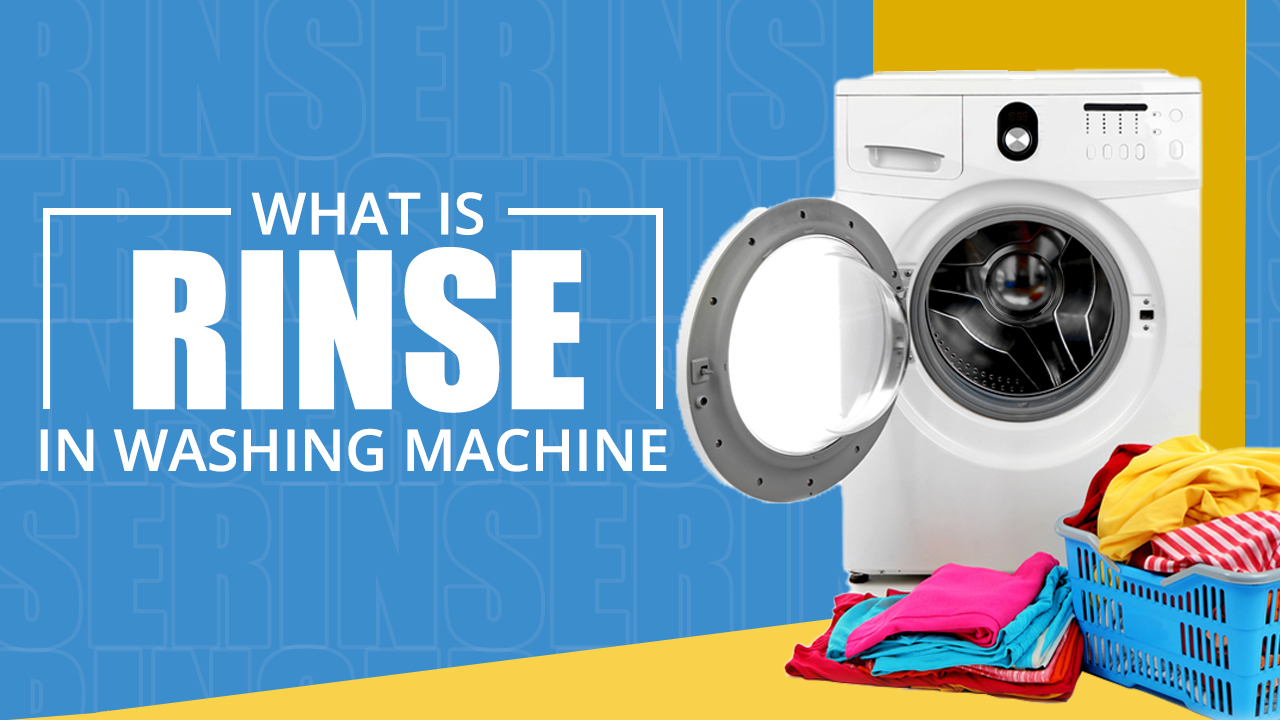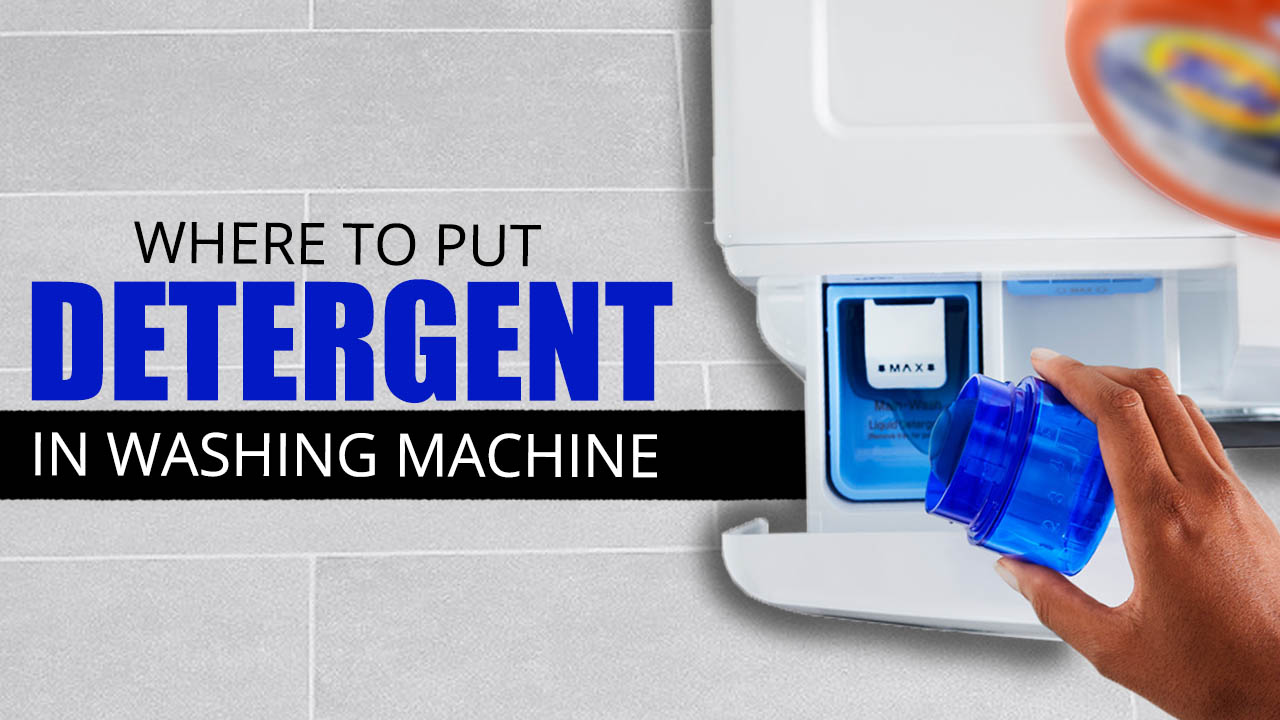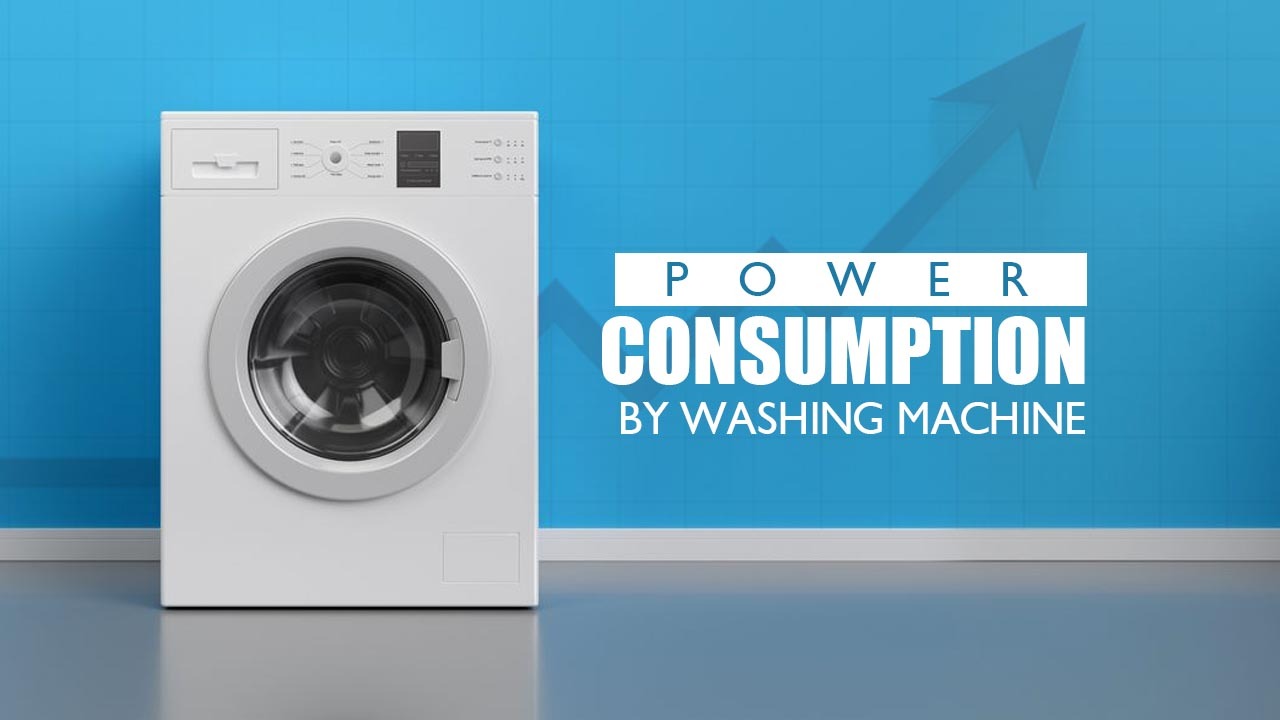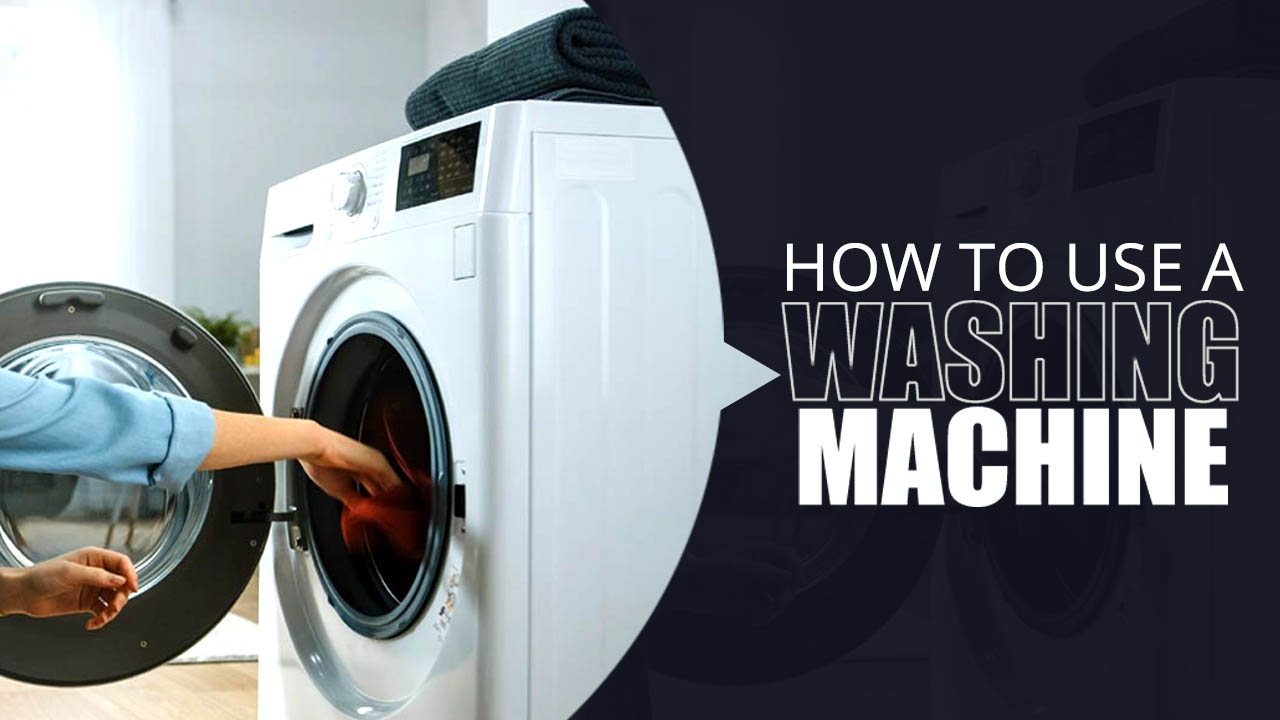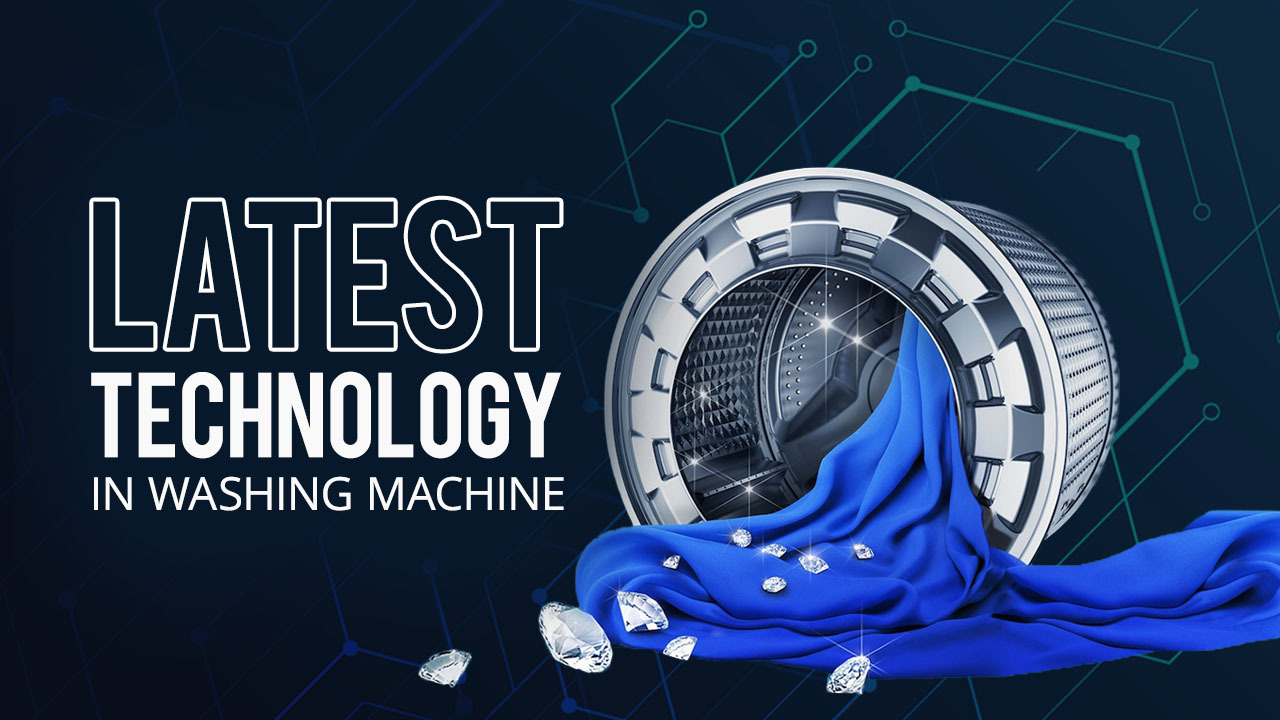A washing machine is a really convenient appliance. They not only make your work easy, but it also saves you a ton of time and effort in washing clothes. Their effectiveness can be subjective, with some washing machines being considerably better than other ones.
Now, here is the thing. Buying the best washing machine can be difficult. However, if you know how washing machine works, and the different functions they provide, buying a really good washing machine would become significantly easier.
Let us look at everything there is to know about the functioning of a washing machine. In short, everything about how washing machine works.
How Washing Machine Works – Explained
A washing machine is a complex appliance made up of several different parts that work together to clean your clothes. The heart of the machine is the agitator, which is a large impeller that churns the water and laundry detergent to create a soapy solution. The water and detergent are then drawn up into the tub, where they are filtered through a series of small holes.
As the water flows back out of the tub, it carries dirt and debris with it, leaving your clothes clean. The entire cycle is controlled by a series of timers and sensors, which ensure that your clothes come out clean and fresh every time.
Washing Machines – An Overview
Here is all there is to know about washing machines, their design, function, and uses. If you are looking for the best washing machines in India, you better grasp a good understanding of what a washing machines comes with.
The Invention of the Washing Machine
The first washing machine was invented in 1797 by Nathaniel Briggs. His machine was based on the design of James Parkinson’s “carpet washer.” The machine was made of wood and had a drum that held water. It was hand-powered and could wash up to 12 pounds of laundry at a time. In 1851, Robert Harper patented the first rotary washing machine. His machine had a cylindrical drum that rotated around a stationary tub.
Water was added to the tub and then clothes were added to the drum. The drum would rotate, washing the clothes. Harper’s machine was also hand-powered. In 1908, Alva J. Fisher invented the first electric washing machine. His machine, called the “Thor,” had a copper tub and an agitator that moved back and forth to clean clothes. It was also the first washing machine to have a timer.
Today, washing machines are digital and can wash large loads of laundry in minutes. They have come a long way since their early days!
Different Parts of a Washing Machine
Most people take their washing machine for granted, never stopping to think about how it actually works. However, even a simple machine like a washing machine is made up of many different parts, each of which plays an important role in the overall function of the machine.
The washing machine has three main parts: the tub, the agitator, and the motor.
The tub is where the clothes are actually washed and is filled with water. The agitator is a paddle that helps to move the clothes around in the tub and get them clean. The motor is what powers the whole machine and helps to spin the clothes dry.
Each of these parts is essential for the proper functioning of a washing machine. Without any one of them, the machine would not be able to do its job.
Using the different modes provided to you, you can easily set the type of wash you want according to the clothes you have to wash.
For some added information, here are all the different parts of a washing machine you should know about.
- Motor – The motor inside the washing machine is responsible for spinning the agitator, which in turn helps spin the clothes inside the drum, thus cleaning them.
- Agitator – The agitator is generally found in top load washing machines, and is the paddle in the middle of the drum that helps turn the clothes and wash them.
- Drums/Tub – There could potentially be three drums in your washing machine. The inner drum is the one which you add clothes to. The outer drum you cannot see, but it is inside the washer and holds water when the agitator is rotating. The third drum is only a thing in semi-automatic washing machines, which helps you dry your clothes post washing.
- Mode selector – A washing machine easily lets you select the mode and speed of rotation at which your clothes will be cleaned. The mode selector can either be straightforward in a basic washing machine, and uber complicated in more feature-rich models that come with a lot of different modes to choose from.
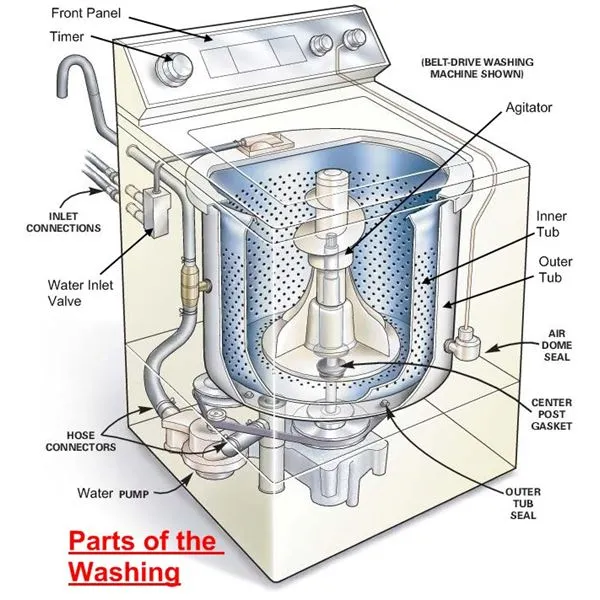
Besides these primary parts, your refrigerator can also come with a thermostat, a heater, a pump to remove any water inside, and more.
Different Types of Washing Machines
Washing machines come in a variety of shapes, sizes, and colors. But more importantly, they come in different types, each with its own unique benefits and drawbacks. The two types of washing machines commonly available include a top loading washing machine, and a front loading washing machine.
The most common type of washing machine is the top loading washing machine. These are typically the most affordable option and are easy to use. However, they can be quite inefficient, as they often require a lot of water and energy to operate.
Front-loading machines are another popular option. These tend to be more expensive than top-loaders but are much more efficient, using less water and energy.
There are also portable washing machines available on the market. These are small, compact machines that can be easily moved from one location to another. They’re perfect for small apartments or homes where space is limited. Portable washing machines typically use less water than their larger counterparts but may not be able to handle large loads of laundry.
Different machines offer different features and come with a varying price point. Even a budget washing machine can wash your clothes, but the more expensive one give you a lot of options and methods to do the same.
Operating a Washing Machine
A washing machine has a simple task, to clean your clothes effectively and dry them out. A highly convenient appliance, washing machines should be in every busy household where time is of the utmost essence.
If you are new to washing machines, it would really help you out to understand how washing machine work and operate. Once you have your pile of dirty clothes, and a washer that is capable and efficient, here is what you do.
- Make sure your washing machine can take the amount of load you are adding to its drum. For example, if your washing machine can handle 8kgs of clothes, make sure you do not go overboard. If you have more clothes to wash, simply clean them in batches. Adding more clothes to a lower capacity washing machine would result in uneven cleaning, and sometimes even permanent damage to your appliance or your clothes.
- If you have a semi automatic machine, fill the tub with water, add detergent, and proceed to add the pile of clothes. If you have an automatic machine, simply set the timer and the mode you wish to run it on.
- Start the wash cycle, and wait for your washing machine to wash all your clothes.
- Once done, drain the water out and bring them into the dryer if you use a semi-automatic washing machine.
- That is all!
How does a Washing Machine work?
Washing machines are really intuitive and effective appliances. Since there are a few kinds available in the market, each functions a little differently from the rest. However, the fundamental approach they work on, and their potential more or less remains the same.
So, a washing machine works on centrifugal force. The motor inside spins the agitator on the bottom of the washing machine. This motion causes the water and clothes inside to spin, and this spin causes all the dirt and debris to fly away from the clothes, thus cleaning them.
The function of a washing machine is quite simple and does not take a rocket scientist to understand. Making the correct use of a washing machine is crucial to make sure you do not either harm your clothes, or damage the appliance itself.
Top Loaders vs Front Loaders
There are two types of washing machines available in the market – top loading washing machines and front loading washing machines. Each, while they have a similar function, do things very differently. They are also built very differently, and even might come with different wash cycles.
While both types of washing machines are perfect to use without any other considerations, the choice ultimately depends on your preferences and how would you build your laundry area.
Build Difference
Now, for the first difference, the build type. Top loading washing machines come with a vertical drum, meaning the tub opening is towards the top of the appliance. Automatic top loading washing machines come with a single drum, while semi-automatic top loading washing machines come with two drums, one for washing and the other one for drying.
Front loading washing machines are generally fully automatic and come with a tub tipped on its side, which means you would have to load your laundry through the front end of the washing machine.
Wash Cycles
The second difference between their workings is their wash cycles. Top loading washing machines tend to rotate the agitator on the bottom of the drum to wash the clothes. Front loaders on the other hand tumble the clothes instead. The drum spins on a horizontal axis, instead of a vertical axis on a top loader.
Conclusion
Buying a washing machine can be a difficult task. There are a lot of things you have to look at, and the more features you add to the appliance, the more confusing it gets, not to mention more expensive as well. It always pays off to understand the appliance well before you go ahead with your purchase.
Washing machines are rather simple appliance if you understand how they work. If you were wondering how washing machine works, we hope we have helped your query out. The function is rather simple to understand and would definitely help you out a lot when you are out buying your new washing machine.
Frequently Asked Questions (FAQs)
1. How does fully automatic washing machine works?
Fully automatic washing machines are really convenient appliances. After you select the desired mode, and at the push of a button your washing machine will automatically clean all your clothes and dry them without any manual intervention. It works with in a similar format like all other washing machines. They have an agitator, a tub, and uses water.
2. What are the 3 parts on washing machine?
The three parts in a washing machine include the agitator, the drum, and the motor. The motor spins the agitator and cleans the clothes that you have loaded into the drum. These three parts make up the washing machine and make sure all cleaning done is effective and safe for the clothes.
3. How does an inverter washing machine work?
An inverter washing machine works similarly to what a normal washing machine would work like. There is simply no change in their function and how it is achieved. The only difference is that inverter washing machines come with a highly efficient motor. This inverter motor saves you a lot of electricity by running on updated technology. Inverter appliances are always better than normal ones and should be your first preference, especially when looking for washing machines.
4. How do portable washing machines work?
Portable washing machines run almost like any top loading washing machine. They are just smaller in size. They come with a tub for washing, an outlet and inlet pipe for water, a few wash cycles, and the ability to wash a handful of clothes at a time.


